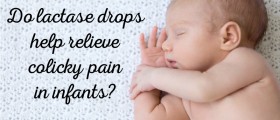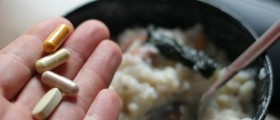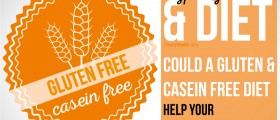Milk Intolerance
The pasteurization of milk is the reason why some people have developed an allergy to this product. Milk intolerance or lactose intolerance is spread worldwide and affects almost 75% of adults.
Symptoms of this intolerance include stomach problems, such as diarrhea, constipation, heartburn, abdominal pain, colic, ear infections, asthma, headaches, irritability, and different skin reactions.
Usually, these patients are advised to avoid processed milk and food that contains lactose, casein, or whey. Also, specialists recommend using substitutes for milk, like soy, almond, or rice milk.

Homeopathic Solutions
Homeopathic approach/solution is somewhat different. The homeopathic practitioner will try to find what causes the milk intolerance and cure it, rather than just deal with symptoms of the condition. The successful treatment will enable a patient to safely drink milk, without any problems.
A homeopathic appointment is actually an interview, where the practitioner tries to find out as much as he/she can about the patient's lifestyle, habits, and personality since everything is considered important for choosing the appropriate remedy. There are many remedies to choose for this particular condition. Every patient is different and will get a special remedy according to the symptoms and personality.
The most used remedies include:
Aethusa – used in children suffering from alactasia, which is a congenital disorder. These children vomit milk, usually in projectiles, and experience colic and weight loss.
Apis – honey bee remedy, suitable for an anaphylactic reaction to milk. Patients have swelling and breathing problems, urticaria, itching, redness, and heat intolerance.
Natrium carbonicum – is suitable for many food intolerances. These people suffer from indigestion, ulcers, and heartburn when eating the “forbidden” food. Sometimes, they have problems with diarrhea and gases. They usually crave sweets and potatoes and are sensitive to weather and temperature changes.
Magnesia muriaticum – is the remedy for people unable to digest milk. Those patients usually suffer from headaches and liver problems and feel irritation after waking up. These people suffer when criticized, and they are usually those who try to find a compromise. Sometimes, patients were abandoned in the past and that still reflects on them, and they feel sadness.
Sulphur – is meant for egocentric and selfish patients. As physical symptoms, they suffer from diarrhea in the morning, bloating, and burning abdominal pain. Mentally, these people might have great ideas but are too lazy to do it themselves.
Make sure you consult a qualified homeopathic practitioner to provide the best possible solution for your milk allergy. Homeopaths with CCH or DHANP credentials might be the best choice for you because they are certified at a high standard.
- The highest prevalence of FA is reported from Australia and New Zealand. As per the CDC data, children are the highest victims of food allergy than the adult population without much variation in sex ratio. About 3.9 million US children below the age of 17 years have food allergy and high prevalence in below 5 years of age. A latest survey in US has projected 8% children are allergic to various food items. In 90% of allergic reactions of food are due to ingestion of milk, eggs, peanuts, tree nuts, fish, shellfish, soy and wheat. It is estimated that the food allergic children are at high risk of getting other allergic conditions like asthma and eczema.
- Apart from the anaphylaxis reactions, major burden on children are developmental anomalies in respect to growth, malnutrition which is essentially observed in children having milk allergy and multiple food allergy reactions. Nutritional impact on elimination diet in cow’s milk allergy was studied and found that weight-for-length index of patients decreased compared with those in healthy age-matched children. Severe Kwashiorkor was reported from United States due to avoidance of milk perceived to be caused dermatitis in an infant. Multiple food allergies are associated with defective growth and development of the child due to restricted diet.
- The mechanism of food allergy has been widely researched in western world and established an immunological phenomenon, unequivocally. There are several contributing factors established which is varied from cultural deviation to socioeconomic development. However IgE mediated food allergy are frequently identified from intake of egg, milk, peanut, nuts, fish and soya in children, and peanuts, nuts, fish and shellfish in adults. But an exact reason behind allergenicity to certain food is not yet established.
- The medicines have different intensity when it comes to the actual disease conditions. For example, if the patient has complaints from beans and peas, the individual symptoms will differentiate the medicines to be prescribed and its required potency and repetition. Though it is mentioned urticaria from eating pork is relieved by Pulsatilla, but in practice it is applicable to fatty food in general. Similarly aggravation to milk is well tolerated by taking either Silicea or Natrum Carb according to the symptom similarity. Using these medicines the cow milk allergy can be effectively treated at early stage so that the developmental disability can be prevented in children.

















Your thoughts on this
Loading...